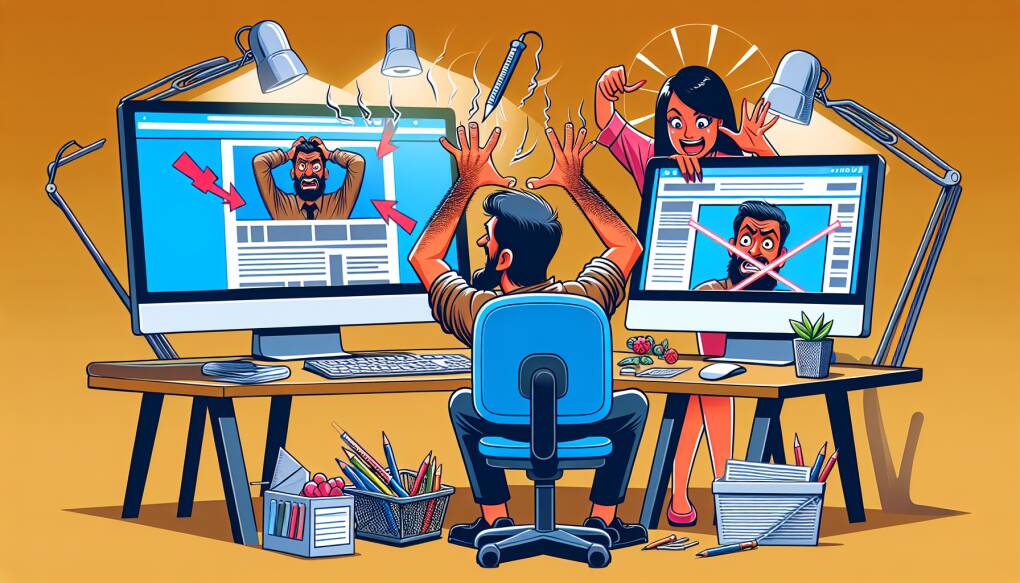Introduction: The Allure of Cost-Effective Design
In our quest to establish a robust online presence, it’s tempting to cut corners on website design costs. However, opting for cheap web design services can lead to a plethora of challenges that may hinder rather than help your business grow. Let’s dissect these common pitfalls and discuss how to dodge them, ensuring your website is both attractive and functional.
Table of Contents
Understanding the Risks of Cheap Website Solutions
Compromising on Quality for Price
Limited Customization Options
When budgets are tight, customization often takes a hit. Generic templates may make quick setups possible but fail to capture the unique essence of your brand. Remember, the goal is to stand out, not blend in!
Hidden Costs That Surmount
Navigating Common Design Mistakes
Poor User Experience (UX) Design
One of the most critical elements in web design is user experience. A cheap design might look passable, but if it’s not user-friendly, visitors will leave as quickly as they came. Elements like navigation, mobile compatibility, and load times are paramount.
Ignoring SEO Best Practices
What’s the point of having a website if no one can find it? Neglecting SEO is like building a shop in a desert. Affordable doesn’t have to mean invisible—integrate basic SEO into your design from the get-go.
Overlooking Website Security
In the digital age, security breaches are all too common, and a compromised website can be catastrophic. Prioritizing security is non-negotiable, regardless of your budget.
The Pitfall of Unscalable Designs
As your business grows, so should your website. An inflexible, cheap design may not accommodate this growth, leading to more expenses down the road. Plan with scalability in mind to save future headaches.

How To Achieve Economical Yet Effective Design
Focus on Essential Features
Identify what features are crucial for your website’s purpose. Prioritizing these over fancy but unnecessary functionalities can save costs while maintaining quality.
Choose Open Source Tools Wisely
Leverage the power of open-source tools. Platforms like WordPress offer numerous themes and plugins that can enhance your site without breaking the bank.
Consider a Hybrid Approach
Sometimes, mixing DIY elements with professional services can balance cost and quality. Know your limits—professional help can prevent costly mistakes.
Effective Budgeting for Your Website
Set a realistic budget that reflects the importance of your website to your business strategy. It’s an investment, not just an expense.
Collaboration with Designers: Communication is Key
When working with designers, clear communication about your budget, vision, and requirements can prevent misunderstandings and ensure that you get the most bang for your buck.
Testing and Feedback: Iterative Improvement
Regularly test and seek feedback on your website. This iterative process helps catch issues early and ensures that the website effectively meets user needs.
Keeping Up with Trends
While chasing every trend is impractical, staying informed helps you understand which innovations could genuinely benefit your website.
Conclusion
Creating a successful website on a budget is perfectly achievable. By understanding and avoiding the pitfalls of cheap web design, focusing on user experience, and making informed choices about where to allocate resources, you can create a website that attracts and engages users without draining your finances. Remember, economical design doesn’t have to mean cheap – it’s about making smart, effective choices.
FAQs
What is the biggest mistake to avoid in cheap website design?
The biggest mistake is neglecting user experience for the sake of cutting costs. A good user experience keeps visitors on your site, which is ultimately more profitable.
Can I build a good website using free website builders?
Yes, free website builders can be a great tool for those on a tight budget, but be wary of their limitations and potential hidden costs.
How important is SEO for a low-cost website?
SEO is crucial; it ensures that your site is discoverable. Without it, even the most beautifully designed website might remain unnoticed.
What is the best way to balance quality and cost in web design?
Prioritizing key features, using open-source tools, and blending DIY efforts with professional help are effective strategies to maintain quality while managing costs.
How often should I update my website?
Regular updates are vital to keep your website relevant and secure. Aim for minor updates monthly and more significant revisions annually, or as needed.

